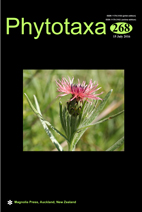Abstract
The morphologically based taxonomic status of Clematis acerifolia var. elobata has been controversial. This study used two nuclear (ITS and ETS) and six plastid (rps16, rpl16, accD, trnS-trnG, atpB-rbcL, and trnV-atpE) molecular markers, and a DNA barcoding analysis to address the taxonomic status of C. acerifolia var. elobata and the relationship among other Clematis species. Our results showed that the discrimination power of ITS, ETS, and atpB-rbcL was better than that of the other tested DNA regions. When all tested sequences combined, most of the sampled taxa were resolved. Though the two taxa are closely related, they have differentiated clearly and formed two clades respectively. The mean divergence of the two taxa was 0.78%, which was higher than closely related Clematis species such as C. heracleifolia and C. pinnata (0.50 %). Considering molecular divergence, morphological differences, and distribution area, we raised C. acerifolia var. elobata to species level.

